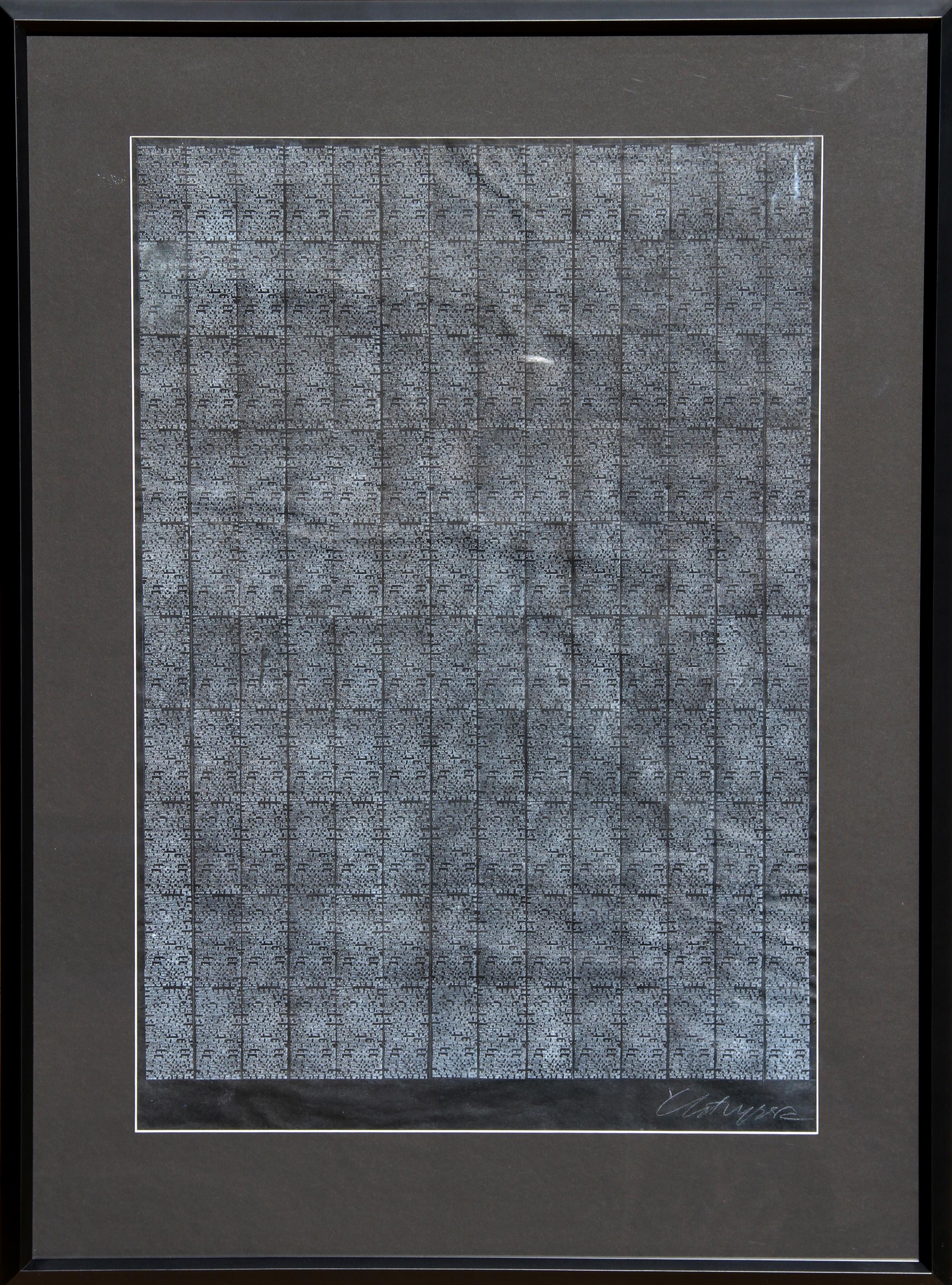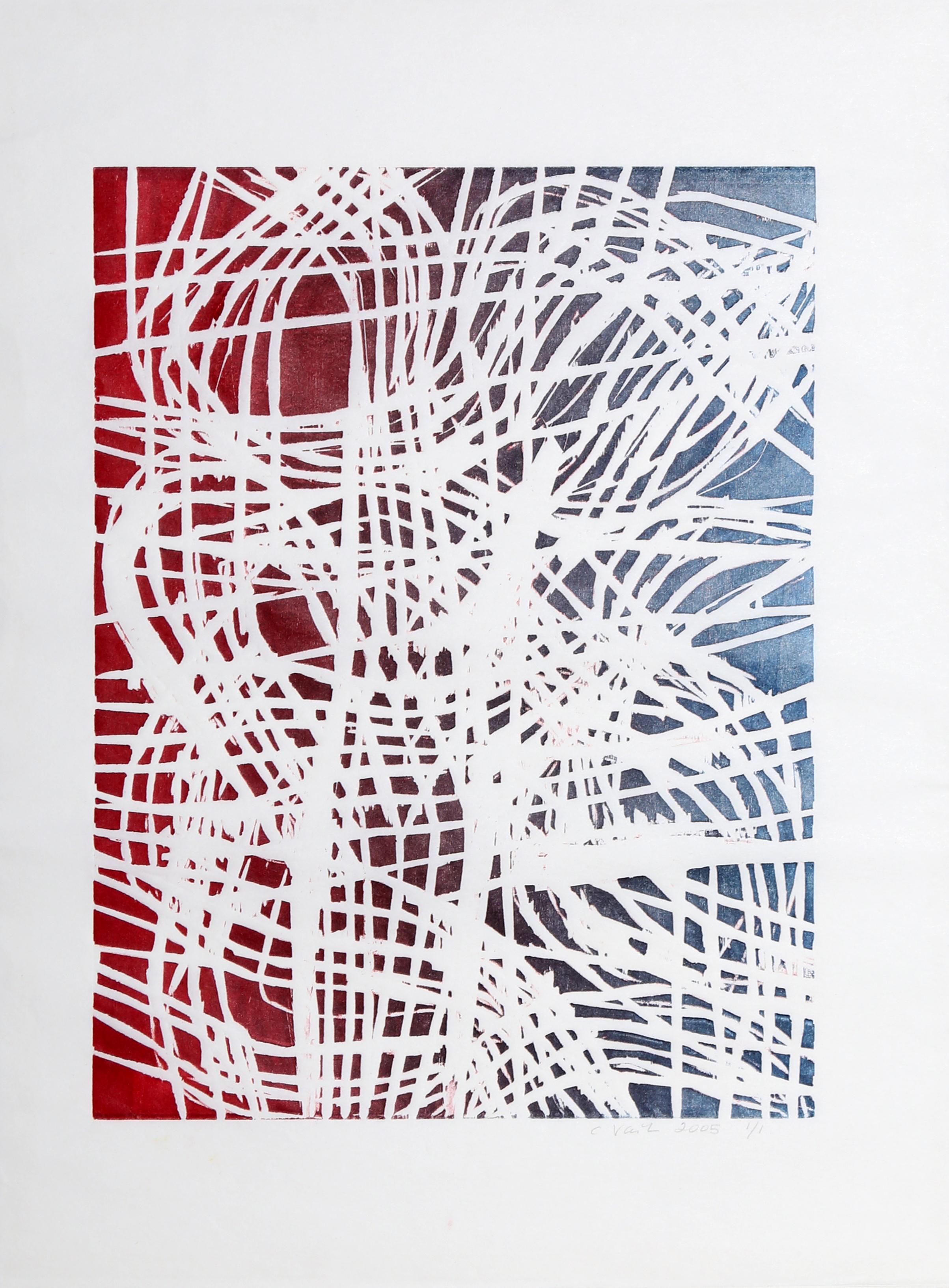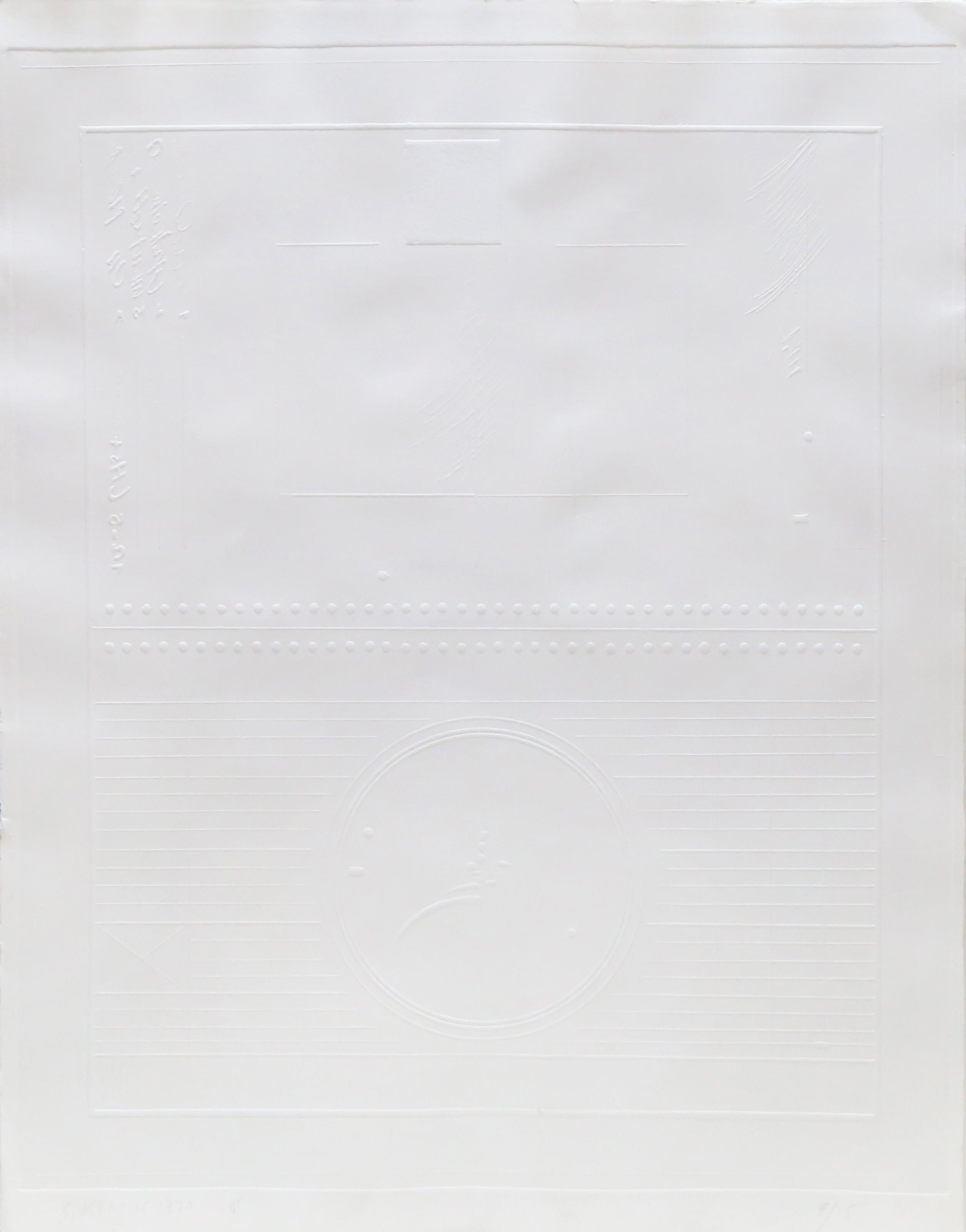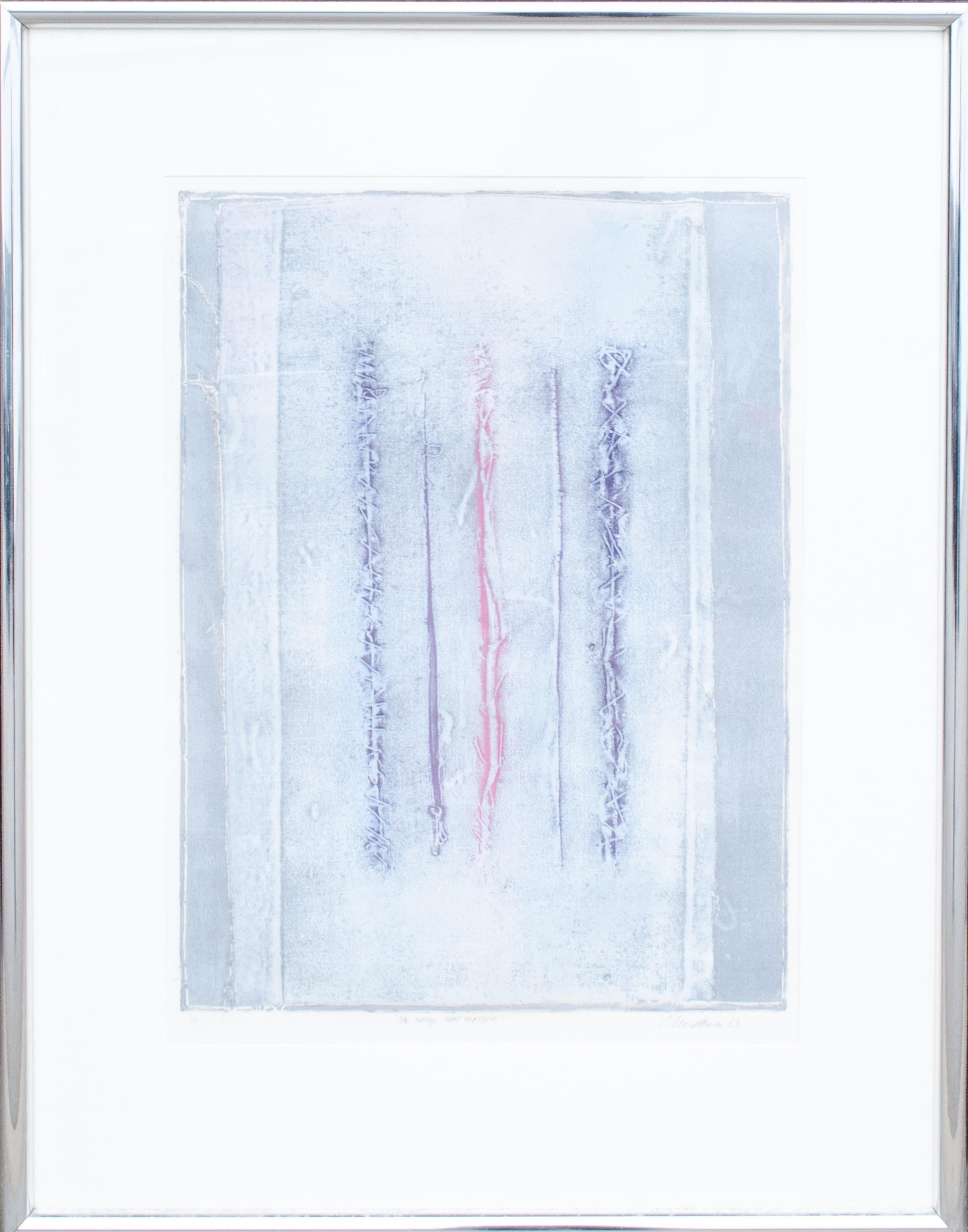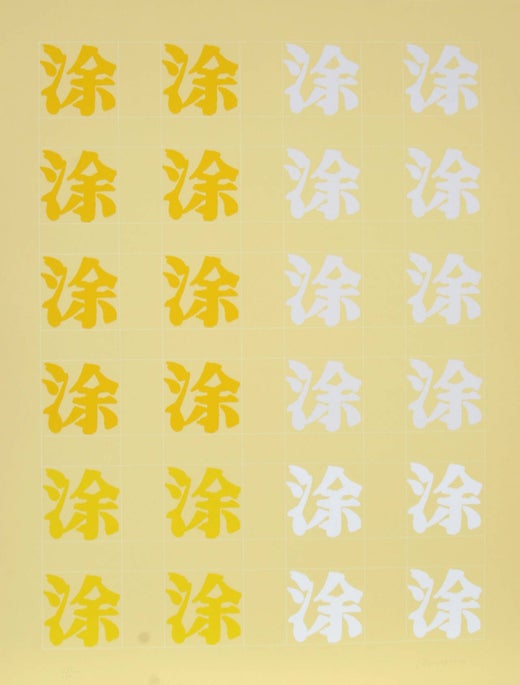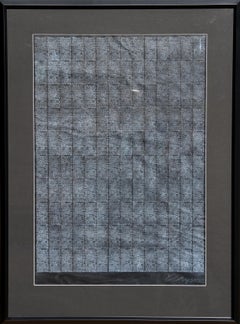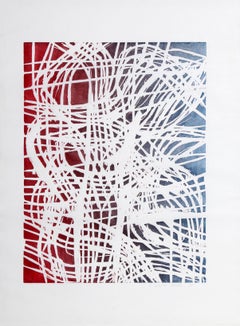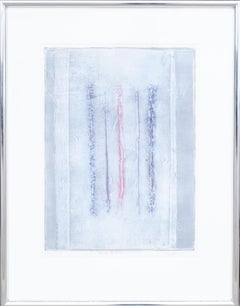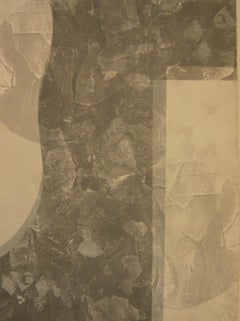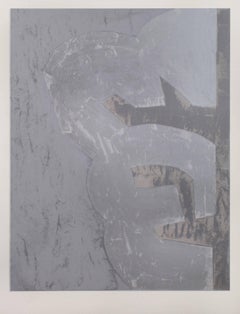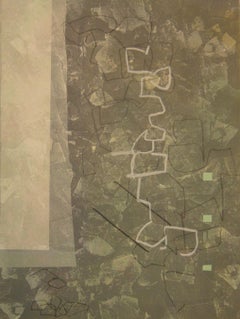Items Similar to American Newsprint, Monoprint by Chryssa
Want more images or videos?
Request additional images or videos from the seller
1 of 6
Chryssa Vardea-MavromichaliAmerican Newsprint, Monoprint by Chryssa1977
1977
$4,500
£3,506.37
€3,977.87
CA$6,467.51
A$7,121.35
CHF 3,692.73
MX$84,336.40
NOK 46,876.88
SEK 43,811.76
DKK 29,710
About the Item
Artist: Chryssa, Greek (1933 - 2013)
Title: American Newsprint
Year: 1977
Medium: Silkscreen and Acrylic Monoprint on Paper, signed, dated and titled in pencil
Image Size: 13 x 21.5 inches
Size: 22 in. x 30 in. (55.88 cm x 76.2 cm)
Frame Size: 26 x 34 inches
- Creator:Chryssa Vardea-Mavromichali (1933 - 2013, Greek)
- Creation Year:1977
- Dimensions:Height: 26 in (66.04 cm)Width: 34 in (86.36 cm)Depth: 2 in (5.08 cm)
- Medium:
- Movement & Style:
- Period:
- Condition:
- Gallery Location:Long Island City, NY
- Reference Number:1stDibs: LU4663328501
Chryssa Vardea-Mavromichali
Chryssa, (born Chryssa Vardea Mavomichali) is best known for her "Luminist" sculpture in brilliantly colored neon tubing, was born in Greece and now ranks as one of the outstanding and innovative artists in America today. Chryssa has had individual and collective exhibition shows at the Museum of Modern Art, The Guggenheim, The Whitney -New York. Harvard University; Institute of Contemporary Art at the University of Pennsylvania; Carnegie Institute among many others.
About the Seller
4.9
Platinum Seller
Premium sellers with a 4.7+ rating and 24-hour response times
Established in 1979
1stDibs seller since 2014
3,170 sales on 1stDibs
Typical response time: 1 hour
- ShippingRetrieving quote...Shipping from: Long Island City, NY
- Return Policy
More From This Seller
View AllClassified Ad, Monoprint by Chryssa
By Chryssa Vardea-Mavromichali
Located in Long Island City, NY
Artist: Chryssa, Greek (1933 - 2013)
Title: Classified Ad
Year: 1977
Medium: Silkscreen and Acrylic Monoprint on Paper, signed, dated and titled in pencil
Image Size: 14.5 x 22 inche...
Category
1970s Conceptual Abstract Prints
Materials
Monoprint
Saratoga, Abstract Monoprint on Handmade Paper by Nancy Genn
By Nancy Genn
Located in Long Island City, NY
Artist: Nancy Genn, American (1929 - )
Title: Saratoga
Year: circa 1978
Medium: Monoprint on hand-made paper, signed l.l.
Size: 40 x 54 inches (101 x 137 cm)
Category
1970s Abstract Abstract Prints
Materials
Handmade Paper, Monoprint
Jobs and Employment Classifieds, Monoprint by Chryssa
By Chryssa Vardea-Mavromichali
Located in Long Island City, NY
Artist: Chryssa, Greek (1933 - 2013)
Title: Jobs and Employment Classifieds
Year: 1982
Medium: Monoprint Silkscreen, signed l.r.
Image Size: 29.5 x 21 inches
Size: 39 in. x 29.5 in. ...
Category
1980s Conceptual Abstract Prints
Materials
Monotype
Abstract Monoprint by Clover Vail
By Clover Vail
Located in Long Island City, NY
Abstract 1
Date: 2005
Monoprint on paper signed, numbered, and dated in pencil
Edition of 1/1
Image Size: 12 x 9 inches
Size: 16 x 12 in. (40.64 x 30.48 cm)
Category
Early 2000s Abstract Abstract Prints
Materials
Monoprint
Untitled VI, Conceptual Intaglio by Shlomo Koren
Located in Long Island City, NY
Shlomo Koren, German/Israeli (1932 - ) - Untitled VI, Year: 1970, Medium: Intaglio, signed and numbered in pencil, Edition: 15, Size: 26 x 20 in. (66.04 x 50.8 cm)
Category
1970s Conceptual Abstract Prints
Materials
Intaglio
New York Times, Silkscreen by Chryssa
By Chryssa Vardea-Mavromichali
Located in Long Island City, NY
Artist: Chryssa, Greek (1933 - 2013)
Title: New York Times (CE)
Year: Circa 1980
Medium: Serigraph, signed and numbered in pencil
Edition: 300; AP 35
Paper Size: 38 x 25 inches
Category
1980s Conceptual Abstract Prints
Materials
Screen
You May Also Like
Lithograph Made with String by Paula Clendenin
Located in New York, NY
Paula Clendenin (American, b. 1949)
Untitled, 1983
Lithograph
Sight: 30 x 22 1/2 in.
Framed: 44 3/4 x 34 3/4 in.
Numbered, titled, dated and signed bottom: 1/15 / "The Things That Matter" / 83
Artist Paula Clendenin was born June 22, 1949, in Cedar Grove, Kanawha County. She has earned national acclaim for her paintings: richly colored, textured shapes that merge West Virginia’s mountain...
Category
1980s American Modern Abstract Prints
Materials
Lithograph
BRHHP 05, Original Signed Contemporary Neutral Toned Monoprint
By Sheila Crider
Located in Boston, MA
BRHHP 05, Original Signed Contemporary Neutral Toned Monoprint
30" x 22" (HxW), Monoprint
This simple abstract monoprint by artist Sheila Crider exudes an air of calm and stillness....
Category
21st Century and Contemporary Abstract Abstract Prints
Materials
Monoprint
Untitled From: Gates to Times Square (20 screenprints, 2 lithographic additions)
By Chryssa Vardea-Mavromichali
Located in Fairlawn, OH
Signed in pencil
Edition 100
Printer: Styria Studio, Inc., NY, with their blindstamp
This earlier (1966) sculpture of the same title is the inspiration of the portfolio. The sculpture is in the collection of the Albright Knox Museum. The screenprints follow the neon of the sculpture.
Greek-born American sculptor Chryssa—who went by her first name professionally—died on December 23, 2013, reports Margalit Fox of the New York Times. Born in 1933 in Athens, Chryssa Vardea-Mavromichali grew up during the Nazi occupation of Greece. After studying at the Académie de la Grande Chaumière, Paris, and the California School of Fine Arts, San Francisco, she began incorporating neon into her fragmentary, text-based work. Her first solo exhibition in New York was held at the Betty Parsons Gallery in 1961, which was quickly followed by shows at the Guggenheim, New York; Leo Castelli Gallery, New York; and the Walker Art Center, Minneapolis. Her work is part of collections of major museums, including the Museum of Modern Art, New York; the Whitney Museum of American Art, New York; and the Corcoran Gallery of Art, Washington, DC.
Note: A set of Gates...
Category
1970s Abstract Abstract Prints
Materials
Screen
BRHHP 40, Original Signed Contemporary Neutral Toned Monoprint
By Sheila Crider
Located in Boston, MA
BRHHP 40, Original Signed Contemporary Neutral Toned Monoprint
30" x 22" (HxW), Monoprint
This simple abstract monoprint by artist Sheila Crider features a neutral color palette of ...
Category
21st Century and Contemporary Abstract Prints and Multiples
Materials
Monoprint
Joyce T. Nagel Monoprint Abstract "Dropout" Signed Dated
Located in Detroit, MI
"Dropout" is one of the monoprints that Joyce Nagel so enjoyed creating. This monoprint is a one-off abstract print. The arrangement of shapes and colors p...
Category
1980s Abstract Expressionist Abstract Prints
Materials
Paper, Ink
Abstract Minimalist Mixed-Media Collage on Paper by Beñat Olaberria 2025
By Beñat Olaberria
Located in Barcelona, Barcelona
At our gallery we are committed to maintaining the highest standards of trust and professionalism for our collectors. Every artwork in our collection comes with a Certificate of Auth...
Category
2010s Abstract Abstract Paintings
Materials
Acrylic, Handmade Paper, Monoprint
Read More
Chryssa’s 1962 Neon Sculpture Was Way ahead of the Art-World Curve
By working with lettering, neon and Pop imagery, Chryssa pioneered several postmodern themes at a time when most male artists detested commercial mediums.
Romare Bearden’s Humanity Infuses His Bright, Bold Art
Through collage, painting and printmaking, the artist foregrounded Black life in America in revolutionary new ways.
More Ways To Browse
A Calder Sky Bird
Adrian Brewer
Agnes Martin Praise
Albers Galerie Melki
Albert Turner
Alberto Hernandez
Alexander Calder Forest
Alexander Calder Signed Lithograph Balloons
Andy Warhol Green Stamps
Anne Appleby
Antonio Peticov On Sale
Artists For Obama
Banksy Vinyl Record
Barbican Poster
Black Star Rosenquist
Brandon Boyd Art
Brandon Boyd
Brent Wadden
